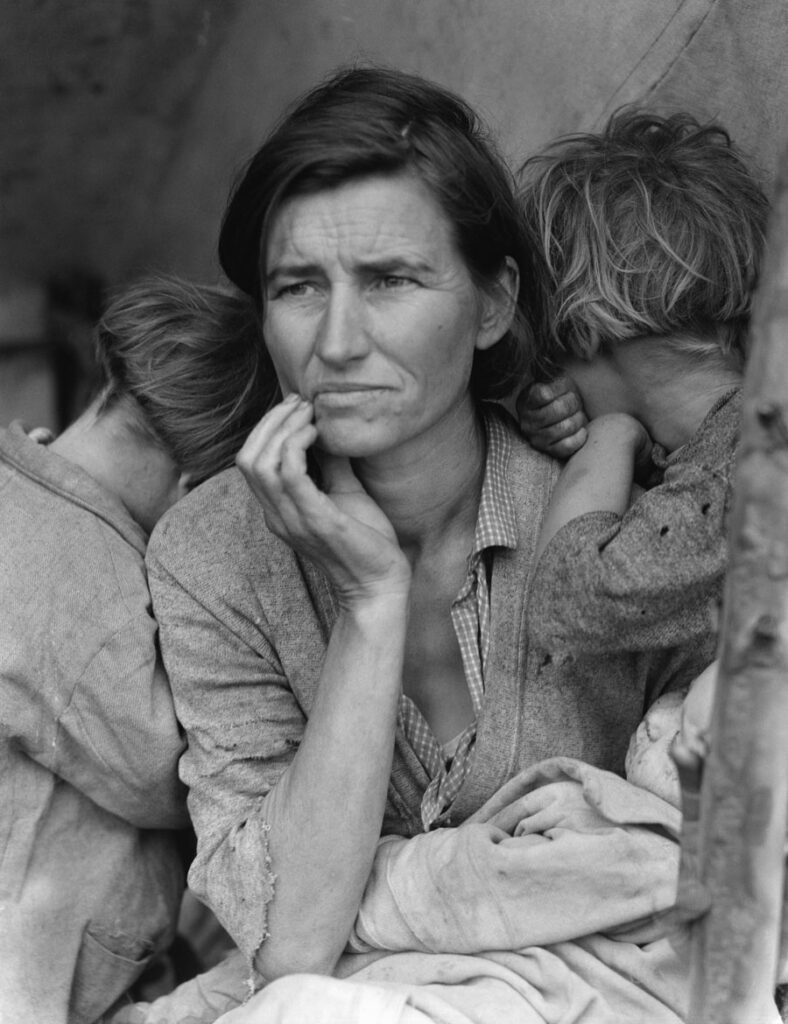It was 1936 and one mother sat worrying in a makeshift tent at the edge of a California pea field. She had seven hungry children, a broken-down car, no place to stay and no work. Her situation was similar to 2,500 other people who came to work in the same fields, but those fields of peas had just been ruined by freezing rain. Now there was no work and no food. But there was one important difference. Dorothea Lange, a photographer working for the U.S. government, took a photo of her that day -- the most famous photo ever taken of the Great Depression. She called it Migrant Mother. Although that one photo made Lange famous, it did nothing for Florence Owens Thompson, then 32. She had been on a long hard road. She had six children when her first husband Cleo Owens died five years before. After his death, she met Jim Hill, and by the time she arrived at that pea field, she had a seventh child. Thompson didn't know it then, but she left that pea field an icon of a painful era. While she did know about the famous image, she remained anonymous for 40 years. In the late 1970s, a reporter tracked her down. She wasn't pleased with the fame that brought her no money when she needed it. But her life had changed. She had picked cotton, tended bar, cooked, worked in fields -- everything to support her family, now grown to nine children. She had married again to a hospital administrator, George Thompson, and the family became financially secure. In the end, the famous photo helped to raise donations for her medical care before her death in 1983. Her grave marker reads: FLORENCE LEONA THOMPSON, Migrant Mother – A Legend of the Strength of American Motherhood.

